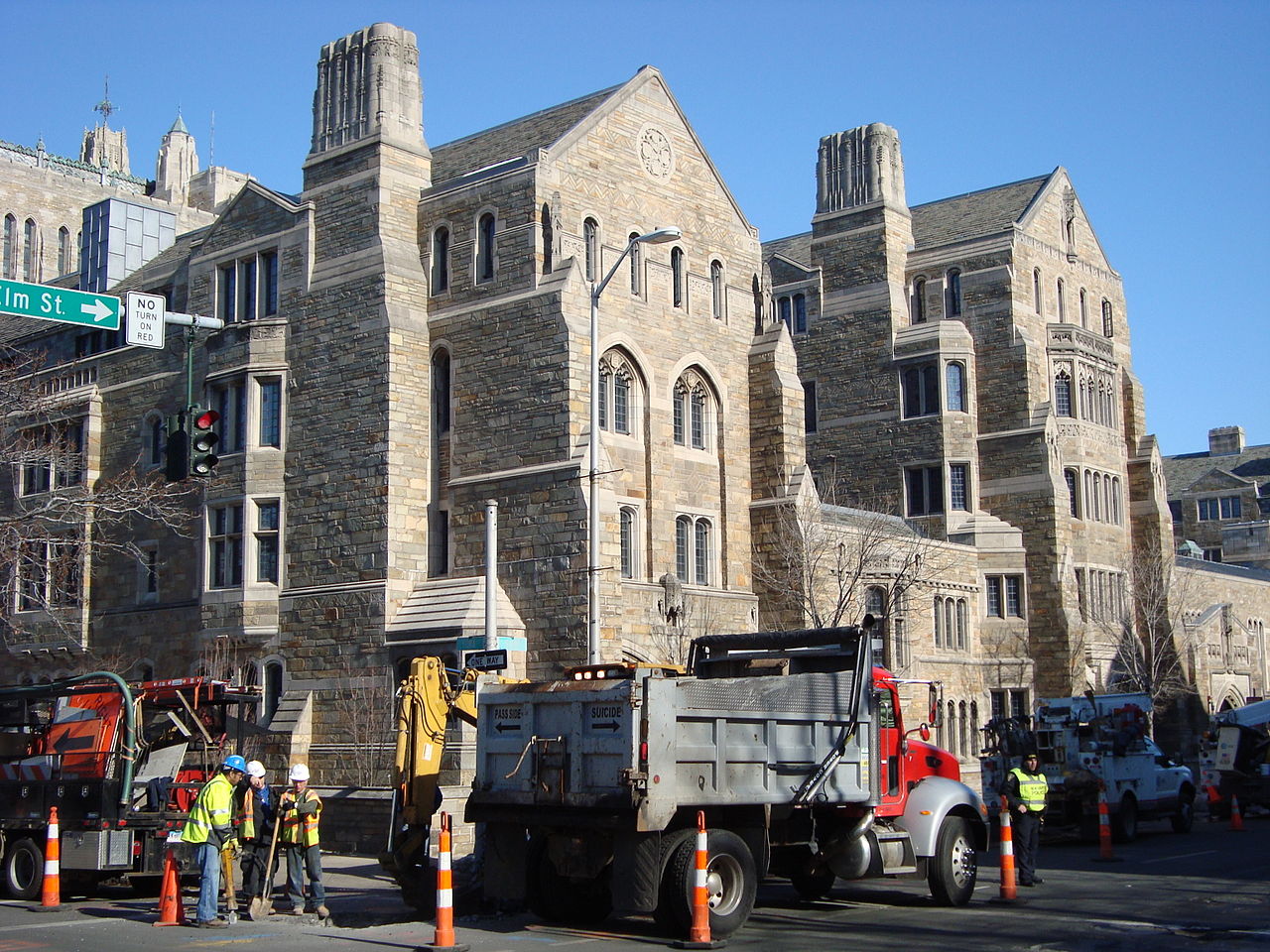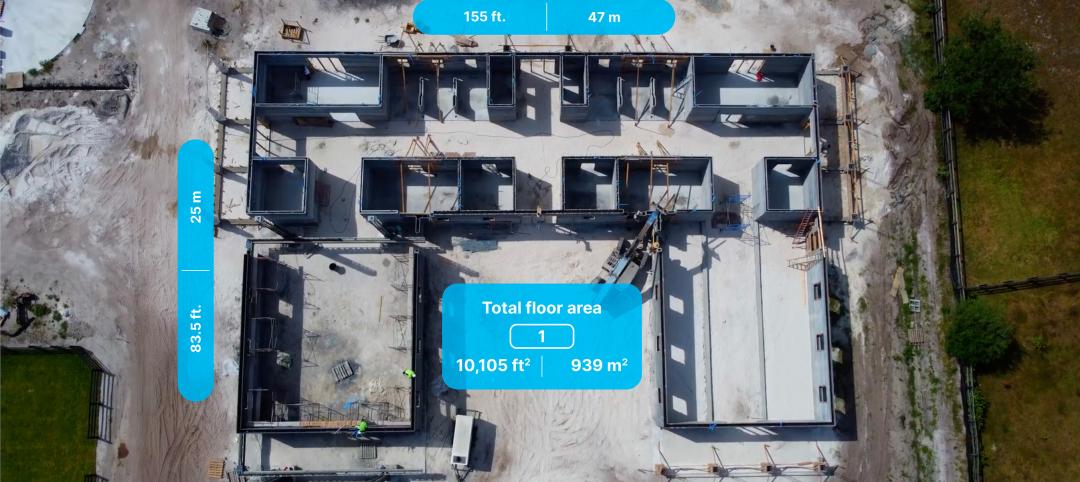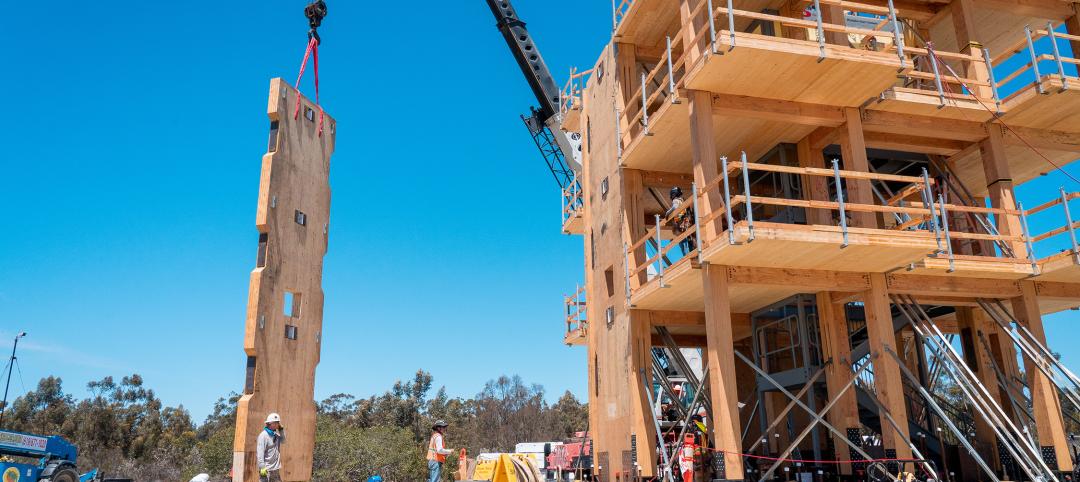December 7, 2015: Yale University has launched a first-of-its-kind pilot program to put a price tag on the use of carbon — with some of the most prominent campus buildings playing a role in the experiment.
Twenty Yale buildings — including the Peabody Museum of Natural History, the School of Management’s Evans Hall, the School of Medicine’s Yale Physicians Building, and Yale Divinity School’s Sterling Divinity Quad — are taking part in the new carbon charge pilot program. So is Woodbridge Hall, the administrative home of Yale President Peter Salovey.
“The carbon charge concept originated as a proposal from Yale undergraduate and graduate students interested in using our campus as a living laboratory for applied research,” said Salovey, who announced the program with Provost Benjamin Polak. “Students were an integral part of the Presidential Carbon Charge Task Force, and many continue to serve in the pilot. Yale’s carbon charge pilot project is an exciting example of how students, faculty members, and staff can collaborate to build a more sustainable and innovative Yale.”
Placing a monetary value on carbon use is considered critical to creating an effective sustainability strategy and is a growing trend in the private sector. The idea is to prompt behavior changes at the individual and organizational levels by putting a price on the carbon dioxide used. Carbon dioxide is a byproduct of all activities that rely on the combustion of fossil fuels for power.
Yale has approximately 350 buildings and uses 3.6 million MMBtu of energy each year. The university generates 60% of its own power at its two co-generation power plants. The remaining electricity is purchased from United Illuminating Co., and natural gas is purchased from Southern Connecticut Gas to power the power plants. The university emits roughly 300,000 tons of carbon dioxide a year. In 2005, Yale pledged to reduce its primary greenhouse gas emissions 43% below 2005 levels by 2020. The university remains on track to meet this ambitious goal.
In 2014, Salovey outlined six sustainability initiatives for Yale, noting that, “Global climate change and its consequences are critical challenges for our time, and Yale has important and necessary roles to play in addressing them.” The initiatives included a $21 million capital investment in energy conservation and greenhouse gas reduction, an expansion of renewable energy, third-party verification of Yale’s greenhouse gas emissions, and the formation of the Presidential Carbon Charge Task Force.
The task force, chaired by Sterling Professor of Economics William Nordhaus, began looking into the feasibility of an internal carbon-pricing program in 2014. Earlier this year, the group presented its recommendations to Salovey. Among those recommendations were that Yale set a carbon charge at the social cost of carbon, currently estimated by the federal government to be $40 per ton of carbon dioxide.
“A key element is that the carbon charge program would expand Yale’s role as a pioneer in research, teaching, and designing practical applications of energy and climate policies,” Nordhaus said. “It would thereby contribute to society’s learning about ways to slow climate change while advancing Yale’s educational mission.”
One novel aspect of Yale’s pilot program is that it is essentially a quartet of experiments to find the best approach to carbon pricing. Each experiment will have five Yale buildings testing a particular manner of carbon pricing:
A market-based model will have Yale units competing with one another to earn rebates.
A target-based model will ask Yale units to meet specified carbon-use goals, in order to earn rebates that are applied to the unit’s annual budget.
An investment model will have Yale units paying a monthly carbon tax for the year. At the end of the year, units will get the money back, with a stipulation that a percentage of the returned money be spent on additional energy-saving measures within their building.
A price signal approach will present Yale units with detailed information about ongoing energy use, along with comparable information about past years’ energy use. The units also will receive regular updates on how their performance would translate into a straight carbon tax payment at the social cost of carbon, purely for informational purposes.
“This will help us arrive at the best model for Yale and allow us to share the lessons we learn with other institutions. That’s a key aspect of the program,” said Ryan Laemel, Yale’s carbon charge project coordinator. “There is no one-size-fits-all approach that works for internal carbon pricing.” (See "How Yale's Carbon Charge Project Works," below.)
The pilot program includes classrooms, residential colleges, laboratories, and offices. Other buildings taking part include Berkeley, Jonathan Edwards, and Pierson residential colleges; the Gilder Boat House; Kroon Hall; and the Yale Health Center.
“It goes beyond simply diversifying the size of the buildings or their carbon footprints. It includes a range of different activity types, budgeting categories, utilities used, building users, and equipment contained,” said carbon charge project manager Jennifer Milikowsky, who is a recent graduate of the joint degree program at the School of Forestry & Environmental Studies and the School of Management. “By doing this we’ll begin to learn how the success of the policies we are testing is influenced by these different characteristics and will help as we continue to expand and improve this project.”
In their announcement, Salovey and Polak noted that feedback from participants and an analysis of the program’s results would inform a broader campus conversation on the topic. “We believe that this pilot project can serve as a model for other institutions, expanding Yale’s role as a pioneer in researching, teaching, and designing climate change solutions,” they said.
Related Stories
3D Printing | Jun 20, 2023
World's largest 3D-printed building completed in Florida
Printed Farms, known for completing Florida’s first permitted 3D-printed house in Tallahassee, announces the completion of the world’s largest 3D-printed building: a luxury horse barn.
Resiliency | Jun 14, 2023
HUD offers $4.8 billion in funding for green and resilient building retrofit projects
The Department of Housing and Urban Development (HUD) recently released guidelines for its Green and Resilient Retrofit Program (GRRP) that has $4.8 billion for funding green projects.
Engineers | Jun 5, 2023
How to properly assess structural wind damage
Properly assessing wind damage can identify vulnerabilities in a building's design or construction, which could lead to future damage or loss, writes Matt Wagner, SE, Principal and Managing Director with Walter P Moore.
Energy-Efficient Design | Jun 5, 2023
Implementing an ‘asset drawdown strategy’ for site decarbonization
Solidifying a decarbonization plan via an “asset drawdown strategy” that carefully considers both capital and operating costs represents a game-changing opportunity for existing properties to compete with new projects.
Cladding and Facade Systems | Jun 5, 2023
27 important questions about façade leakage
Walter P Moore’s Darek Brandt discusses the key questions building owners and property managers should be asking to determine the health of their building's façade.
Mass Timber | Jun 2, 2023
First-of-its-kind shake test concludes mass timber’s seismic resilience
Last month, a 10-story mass timber structure underwent a seismic shake test on the largest shake table in the world.
3D Printing | May 12, 2023
World’s first 3D-printed medical center completed
3D construction printing reached new heights this week as the world’s first 3D-printed medical center was completed in Thailand.
Sustainability | May 11, 2023
Let's build toward a circular economy
Eric Corey Freed, Director of Sustainability, CannonDesign, discusses the values of well-designed, regenerative buildings.
Resiliency | Apr 18, 2023
AI-simulated hurricanes could aid in designing more resilient buildings
Researchers at the National Institute of Standards and Technology (NIST) have devised a new method of digitally simulating hurricanes in an effort to create more resilient buildings. A recent study asserts that the simulations can accurately represent the trajectory and wind speeds of a collection of actual storms.
Urban Planning | Apr 12, 2023
Watch: Trends in urban design for 2023, with James Corner Field Operations
Isabel Castilla, a Principal Designer with the landscape architecture firm James Corner Field Operations, discusses recent changes in clients' priorities about urban design, with a focus on her firm's recent projects.

















